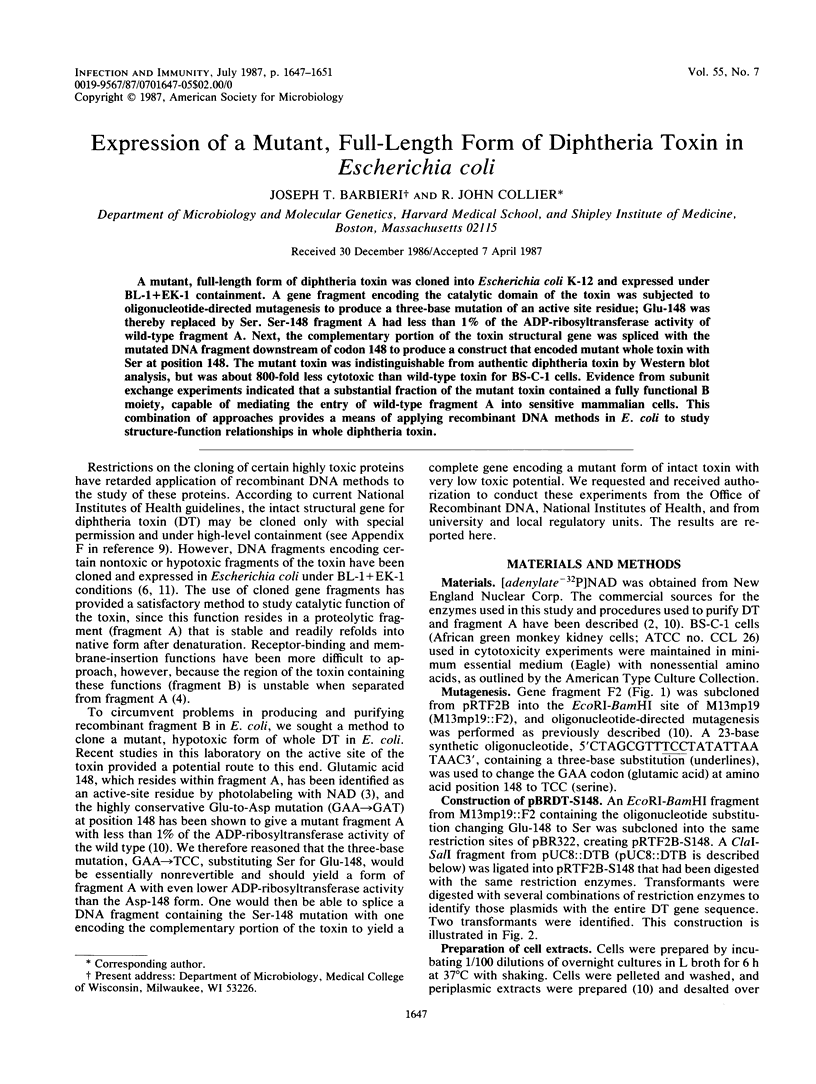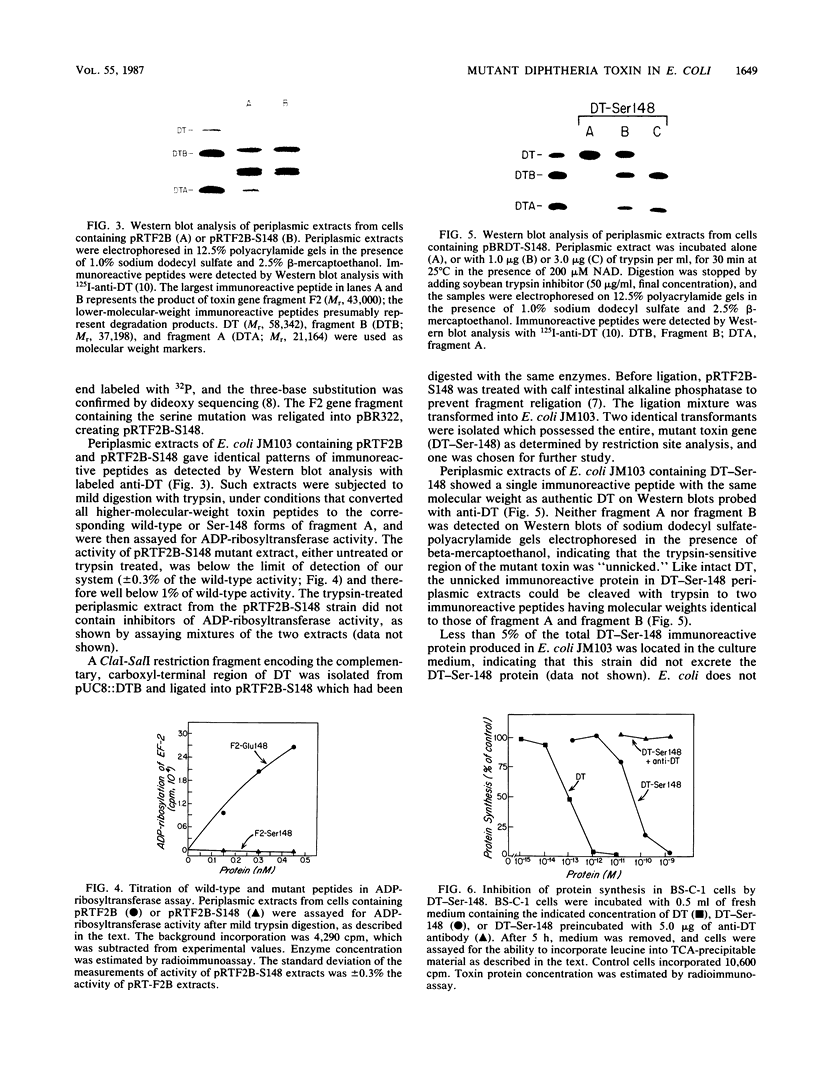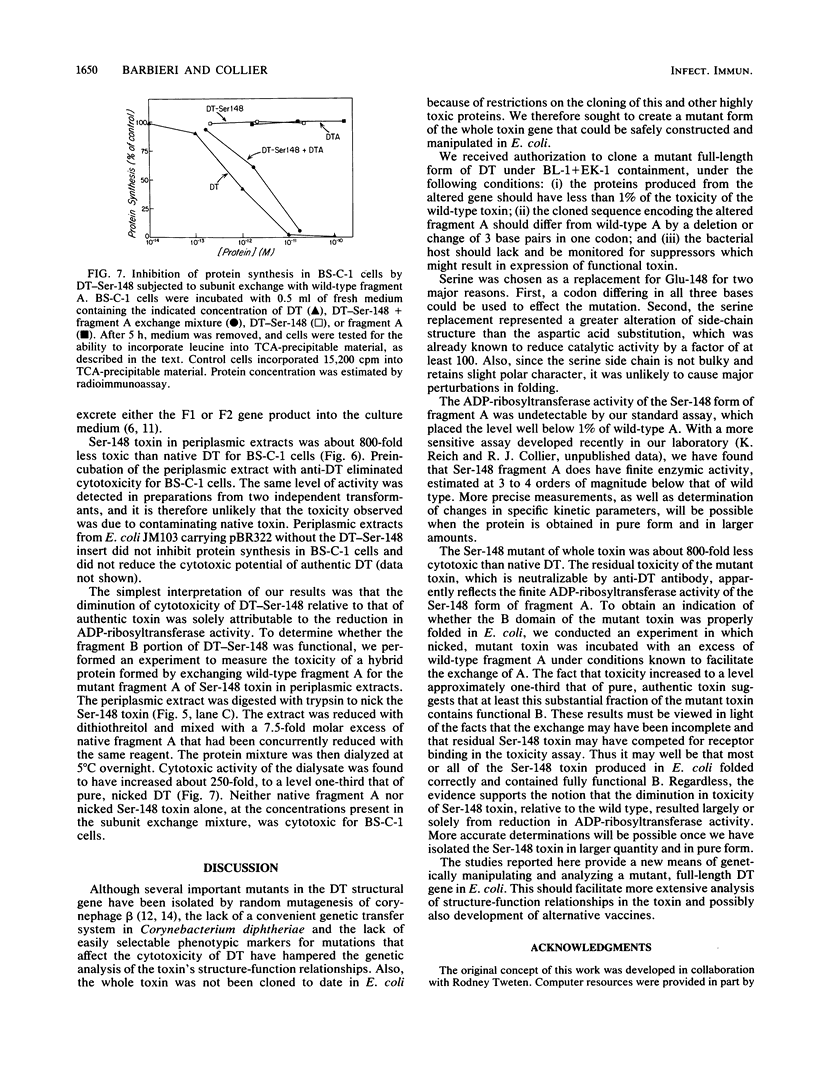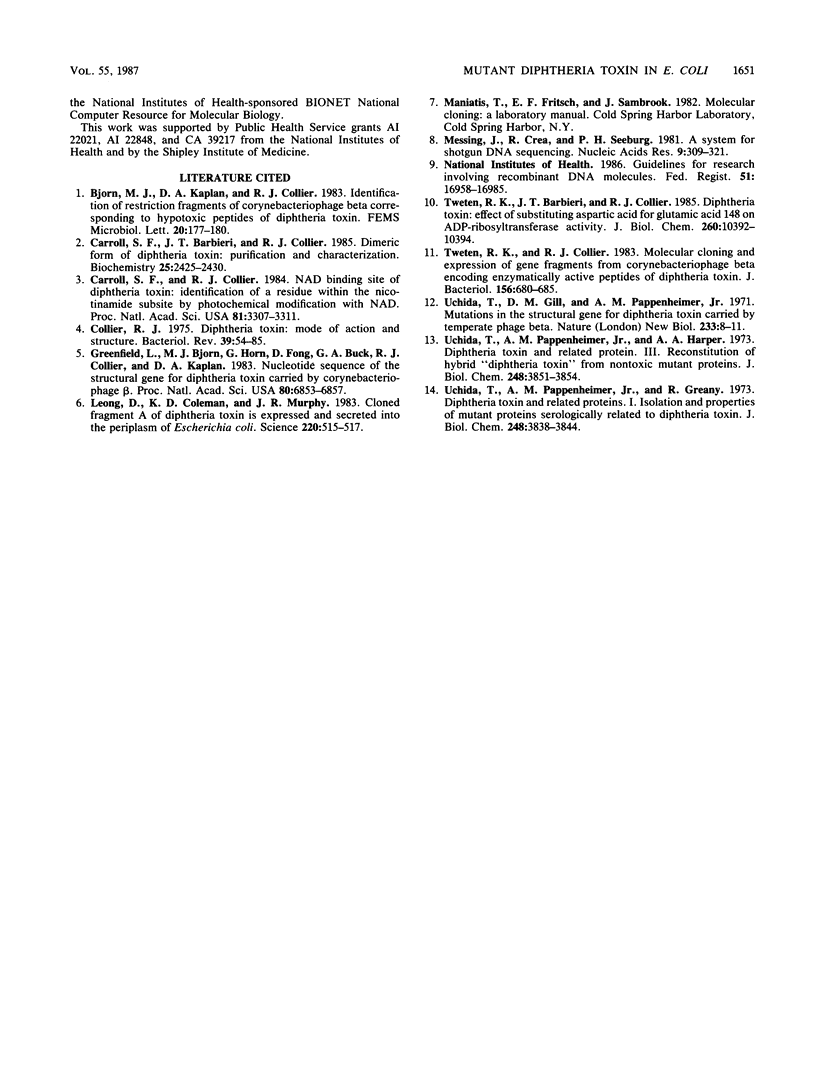Abstract
A mutant, full-length form of diphtheria toxin was cloned into Escherichia coli K-12 and expressed under BL-1 + EK-1 containment. A gene fragment encoding the catalytic domain of the toxin was subjected to oligonucleotide-directed mutagenesis to produce a three-base mutation of an active site residue; Glu-148 was thereby replaced by Ser. Ser-148 fragment A had less than 1% of the ADP-ribosyltransferase activity of wild-type fragment A. Next, the complementary portion of the toxin structural gene was spliced with the mutated DNA fragment downstream of codon 148 to produce a construct that encoded mutant whole toxin with Ser at position 148. The mutant toxin was indistinguishable from authentic diphtheria toxin by Western blot analysis, but was about 800-fold less cytotoxic than wild-type toxin for BS-C-1 cells. Evidence from subunit exchange experiments indicated that a substantial fraction of the mutant toxin contained a fully functional B moiety, capable of mediating the entry of wild-type fragment A into sensitive mammalian cells. This combination of approaches provides a means of applying recombinant DNA methods in E. coli to study structure-function relationships in whole diphtheria toxin.
Full text
PDF




Images in this article
Selected References
These references are in PubMed. This may not be the complete list of references from this article.
- Carroll S. F., Barbieri J. T., Collier R. J. Dimeric form of diphtheria toxin: purification and characterization. Biochemistry. 1986 May 6;25(9):2425–2430. doi: 10.1021/bi00357a019. [DOI] [PubMed] [Google Scholar]
- Carroll S. F., Collier R. J. NAD binding site of diphtheria toxin: identification of a residue within the nicotinamide subsite by photochemical modification with NAD. Proc Natl Acad Sci U S A. 1984 Jun;81(11):3307–3311. doi: 10.1073/pnas.81.11.3307. [DOI] [PMC free article] [PubMed] [Google Scholar]
- Collier R. J. Diphtheria toxin: mode of action and structure. Bacteriol Rev. 1975 Mar;39(1):54–85. doi: 10.1128/br.39.1.54-85.1975. [DOI] [PMC free article] [PubMed] [Google Scholar]
- Greenfield L., Bjorn M. J., Horn G., Fong D., Buck G. A., Collier R. J., Kaplan D. A. Nucleotide sequence of the structural gene for diphtheria toxin carried by corynebacteriophage beta. Proc Natl Acad Sci U S A. 1983 Nov;80(22):6853–6857. doi: 10.1073/pnas.80.22.6853. [DOI] [PMC free article] [PubMed] [Google Scholar]
- Leong D., Coleman K. D., Murphy J. R. Cloned fragment A of diphtheria toxin is expressed and secreted into the periplasmic space of Escherichia coli K12. Science. 1983 Apr 29;220(4596):515–517. doi: 10.1126/science.6403984. [DOI] [PubMed] [Google Scholar]
- Messing J., Crea R., Seeburg P. H. A system for shotgun DNA sequencing. Nucleic Acids Res. 1981 Jan 24;9(2):309–321. doi: 10.1093/nar/9.2.309. [DOI] [PMC free article] [PubMed] [Google Scholar]
- Tweten R. K., Barbieri J. T., Collier R. J. Diphtheria toxin. Effect of substituting aspartic acid for glutamic acid 148 on ADP-ribosyltransferase activity. J Biol Chem. 1985 Sep 5;260(19):10392–10394. [PubMed] [Google Scholar]
- Tweten R. K., Collier R. J. Molecular cloning and expression of gene fragments from corynebacteriophage beta encoding enzymatically active peptides of diphtheria toxin. J Bacteriol. 1983 Nov;156(2):680–685. doi: 10.1128/jb.156.2.680-685.1983. [DOI] [PMC free article] [PubMed] [Google Scholar]
- Uchida T., Gill D. M., Pappenheimer A. M., Jr Mutation in the structural gene for diphtheria toxin carried by temperate phage . Nat New Biol. 1971 Sep 1;233(35):8–11. doi: 10.1038/newbio233008a0. [DOI] [PubMed] [Google Scholar]
- Uchida T., Pappenheimer A. M., Jr, Greany R. Diphtheria toxin and related proteins. I. Isolation and properties of mutant proteins serologically related to diphtheria toxin. J Biol Chem. 1973 Jun 10;248(11):3838–3844. [PubMed] [Google Scholar]
- Uchida T., Pappenheimer A. M., Jr, Harper A. A. Diphtheria toxin and related proteins. 3. Reconstitution of hybrid "diphtheria toxin" from nontoxic mutant proteins. J Biol Chem. 1973 Jun 10;248(11):3851–3854. [PubMed] [Google Scholar]




